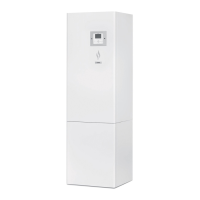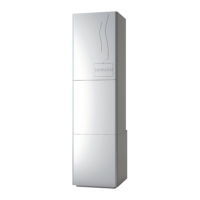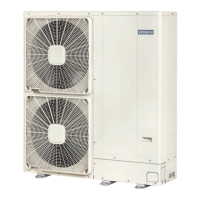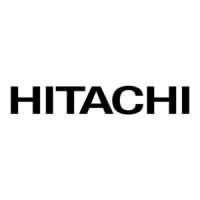17
PMEN0643 rev.0 - 04/2023
5
GENERAL NOTES BEFORE PERFORMING PIPING WORK
REFRIGERANT AND WATER PIPING
5.1 General notes before performing piping work
• Prepare locally-supplied copper pipes.
• Select the piping size with the correct thickness and correct material able to withstand sucient
pressure.
• Select clean copper pipes. Make sure that there is no dust or moisture inside the pipes. Blow
the inside of the pipes with oxygen free nitrogen to remove any dust and foreign materials
before connecng them.
NOTE
A system with no moisture or oil contaminaon will give maximum performance and lifecycle
compared to that of a poorly prepared system. Take parcular care to ensure that all copper piping
is clean and dry internally.
• Cap the end of the pipe when pipe is to be inserted through a wall hole.
• Do not put pipes on the ground directly without a cap or vinyl tape at the end of the pipe.
• If piping installaon is not completed unl next day or over a longer period of me, braze o the
ends of the piping and charge with oxygen free nitrogen through a Schrader valve type access
ng to prevent moisture and parcle contaminaon.
• It is advisable to insulate the water pipes, joints and connecons in order to avoid heat loss and
dew condensaon on the surface of the pipes or accidental injures due to excessive heat on
piping surfaces.
• Do not use insulaon material that contains NH
3
, as it can damage copper pipe material and
become a source of future leakage.
• It is recommended to use exible joints for the water piping inlet and outlet in order to avoid
vibraon transmission.
• Refrigerant circuit and Water circuit must be performed and inspected by a licensed technician
and must comply with all relevant European and naonal regulaons.
• Proper water pipe inspecon should be performed aer piping work to assure there is no water
leakage in the space heang circuit.
5.2 R32 Refrigerant circuit
5.2.1 General notes R32 refrigerant
This appliance is lled with R32, an odourless ammable refrigerant gas with low burning velocity
(A2L class pursuant to ISO 817). If the refrigerant is leaked, there is a possibility of ignion if it
enters in contact with an external ignion source.
Make sure that unit installaon and refrigerant piping installaon comply with applicable legislaon
in each country. Also, in Europe, EN378 must be complied, as it is the applicable standard.
